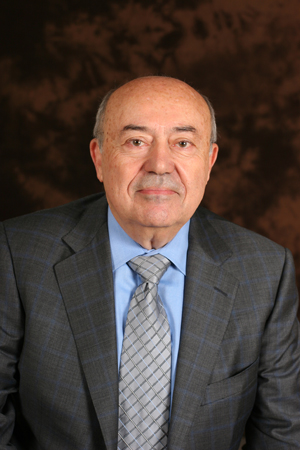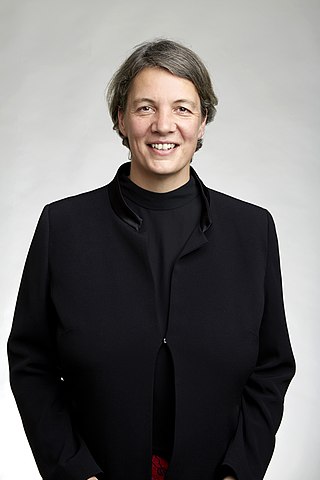
Andrew James Viterbi is an Italian Jewish–American electrical engineer and businessman who co-founded Qualcomm Inc. and invented the Viterbi algorithm. He is the Presidential Chair Professor of Electrical Engineering at the University of Southern California's Viterbi School of Engineering, which was named in his honor in 2004 in recognition of his $52 million gift.
The Australian Research Council (ARC) is the primary non-medical research funding agency of the Australian Government, distributing more than A$800 million in grants each year. The Council was established by the Australian Research Council Act 2001, and provides competitive research funding to academics and researchers at Australian universities. Most health and medical research in Australia is funded by the more specialised National Health and Medical Research Council (NHMRC), which operates under a separate budget.

Matthew England is a physical oceanographer and climate scientist. He is currently Scientia Professor of Ocean & Climate Dynamics at the University of New South Wales, Sydney, Australia.

Tatsuo Itoh was an electrical engineer who was professor and holder of the Northrop Grumman Chair in Microwave and Millimeter Wave Electronics in the Electrical Engineering Department at the University of California, Los Angeles (UCLA), where he taught and conducted research on microwave and millimeter wave electronics, guided wave structures, low power wireless electronics, and integrated passive components and antennas.
{{Infobox scientist | name = Yingjie Jay Guo | image = | caption = | birth_date = | birth_place = | death_date = | death_place = | field = [[Electromagnetics] [Antennas] [Wireless Communications]] | work_institutions = University of Technology Sydney | alma_mater = Xian Jiaotong University }}

John O'Sullivan is an Australian engineer.

Benjamin John Eggleton,, is Pro Vice Chancellor (Research) at the University of Sydney. He is also Professor in the School of Physics where he leads a research group in integrated photonics, nonlinear optics and smart sensors and serves as co-director of the NSW Smart Sensing Network (NSSN).
IEEE 802.11ad is an amendment to the IEEE 802.11 wireless networking standard, developed to provide a Multiple Gigabit Wireless System (MGWS) standard in the 60 GHz band, and is a networking standard for WiGig networks. Because it uses the V band of the millimeter wave (mmW) band, the range of IEEE 802.11ad communication would be rather limited compared to other conventional Wi-Fi systems. However, its great bandwidth enables the transmission of data at high data rates up to multiple gigabits per second, enabling usage scenarios like transmission of uncompressed UHD video over the wireless network.

Michelle Yvonne Simmons is an Australian quantum physicist, recognised for her foundational contributions to the field of atomic electronics.

Tanya Mary Monro is an Australian physicist known for her work in photonics. She has been Australia's Chief Defence Scientist since 8 March 2019. Prior to that she was the Deputy Vice Chancellor, Research and Innovation (DVCR&I) at the University of South Australia. She was awarded the ARC Georgina Sweet Australian Laureate Fellowship in 2013. She was the inaugural director of the Institute for Photonics & Advanced Sensing (IPAS). Monro has remained an adjunct professor of physics at the University of Adelaide following her departure from the institution. In 2020 she was awarded the title of Emeritus Professor at the University of South Australia.
Martina Heide Stenzel is a Professor in the Department of Chemistry at the University of New South Wales (UNSW). She is also a Royal Australian Chemical Institute (RACI) University Ambassador. She became editor for the Australian Journal of Chemistry in 2008 and has served as Scientific Editor and as of 2021, as Editorial Board Chair of RSC Materials Horizons.
David Skellern is an Australian electronic engineer and computer scientist credited, along with colleagues, for the first chip-set implementation of the IEEE 802.11a wireless networking standard.
Theodore (Ted) Scott Rappaport is an American electrical engineer and the David Lee/Ernst Weber Professor of Electrical and Computer Engineering at New York University Tandon School of Engineering and founding director of NYU WIRELESS.
Elza Erkip is a Turkish-American electrical and computer engineer, professor and wireless technology researcher at New York University.
Marcela Bilek is a Professor of Applied Physics and Surface Engineering at the University of Sydney, Australia. Her research interests focus on the use of plasma related methods to synthesise thin film materials and modify surfaces and interfaces. She was named Fellow of the American Physical Society in 2012 and Fellow of the Institute of Electrical and Electronics Engineers (IEEE) in 2015 for contributions to the science and application of plasma processes for materials modification and synthesis.
Dacheng Tao is an Australian engineer and academic. He is currently a professor of computer science at the University of Sydney, Australia. He received a PhD in 2007 from the University of London under Stephen Maybank, with a thesis titled Discriminative linear and multilinear subspace methods. He was named a Fellow of the Institute of Electrical and Electronics Engineers (IEEE) in 2015 for his contributions to pattern recognition and visual analytics. He was awarded an Australian Laureate Fellowship in 2017. In 2018, Tao was also elected a Fellow of the Australian Academy of Science (FAA) for his "ground-breaking contributions in artificial intelligence, computer vision image processing and machine learning. He was elected as an ACM Fellow in 2019 "for contributions to representation learning and its applications". He was selected to the Global Young Academy. Tao won the Australian Museum's Eureka Prize for Excellence in Data Science in 2020. He has written over 1200 publications across various Artificial Intelligence fields, including pattern recognition, visual analytics, and statistical learning theory.
Karu P. Esselle is an Australian scholar, professor, engineer, scientist and inventor. He is the Distinguished Professor in Electromagnetic and Antenna Engineering at University of Technology Sydney, Australia. He is the leader of the MetaSteerers Team, which won Australia's national 2023 Department of Defence Eureka Prize for Outstanding Science in Safeguarding Australia. He was named Australia's Professional Engineer of the Year for 2022 by Engineers Australia - the national body that oversees engineering practice and profession in Australia. Eureka prizes are considered the Oscars of Australian Science. He is also a visiting professor of electronic engineering at Macquarie University in Sydney, Australia.
Kourosh Kalantar-zadeh is an Australian scientist involved in research in the fields of materials sciences, electronics, and transducers. He is best known for his works on two-dimensional semiconductors, ingestible sensors and liquid metals. He led his group to the invention of an ingestible chemical sensor: human gas sensing capsule.

Mohamed-Slim Alouini is the Al-Khwarizmi Distinguished Professor of Electrical and Computer Engineering and the holder of the UNESCO Chair in Education to Connect the Unconnected at the King Abdullah University of Science and Technology (KAUST), Thuwal, Makkah Province, Saudi Arabia. His research interests include the modeling, design, and performance analysis of wireless, satellite, and optical communication systems. He is a fellow of the Institute of Electrical and Electronics Engineers (IEEE) and OPTICA (formerly known as the Optical Society of America.
Nacer E. Chahat is a French Algerian-American engineer and researcher at the National Aeronautics and Space Administration (NASA) Jet Propulsion Laboratory.








